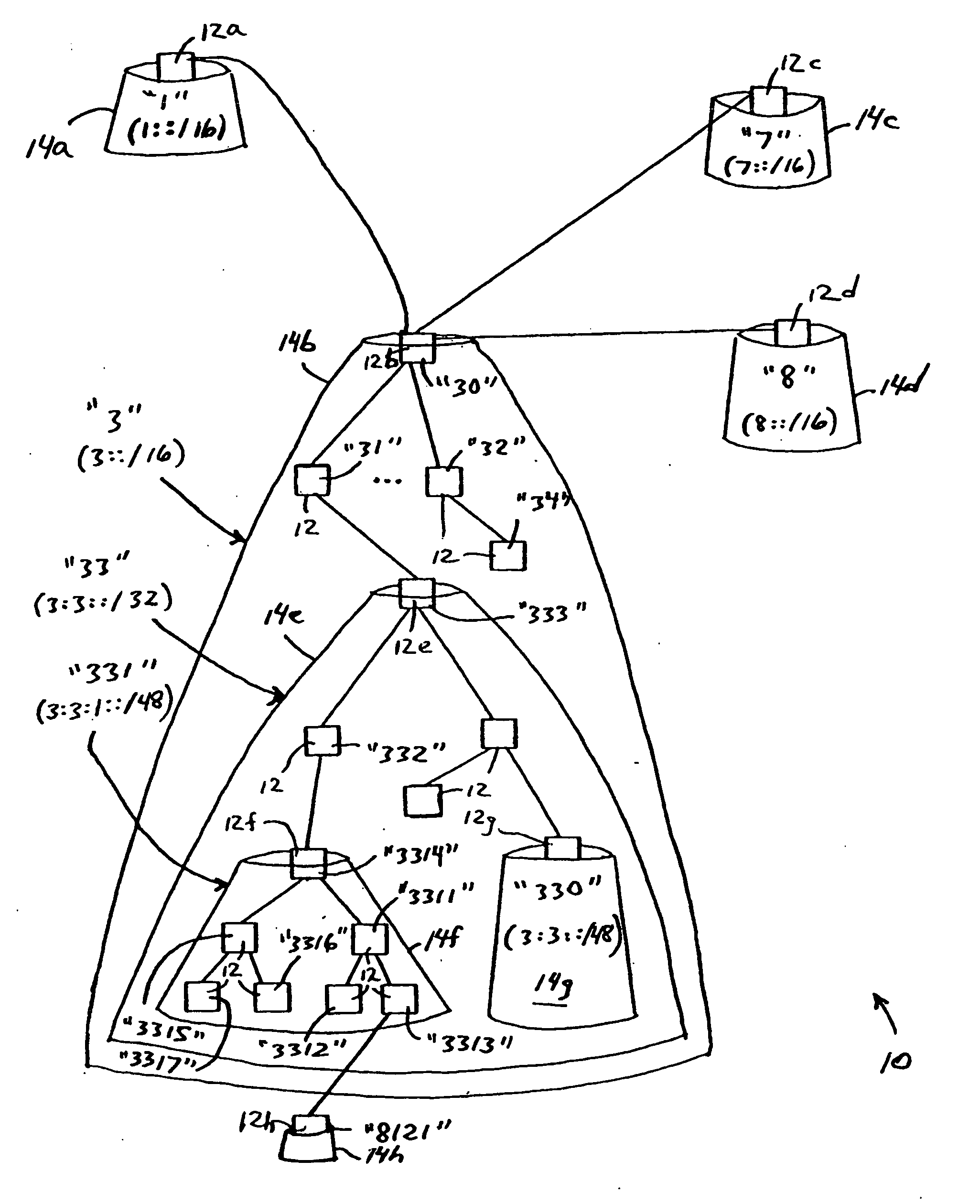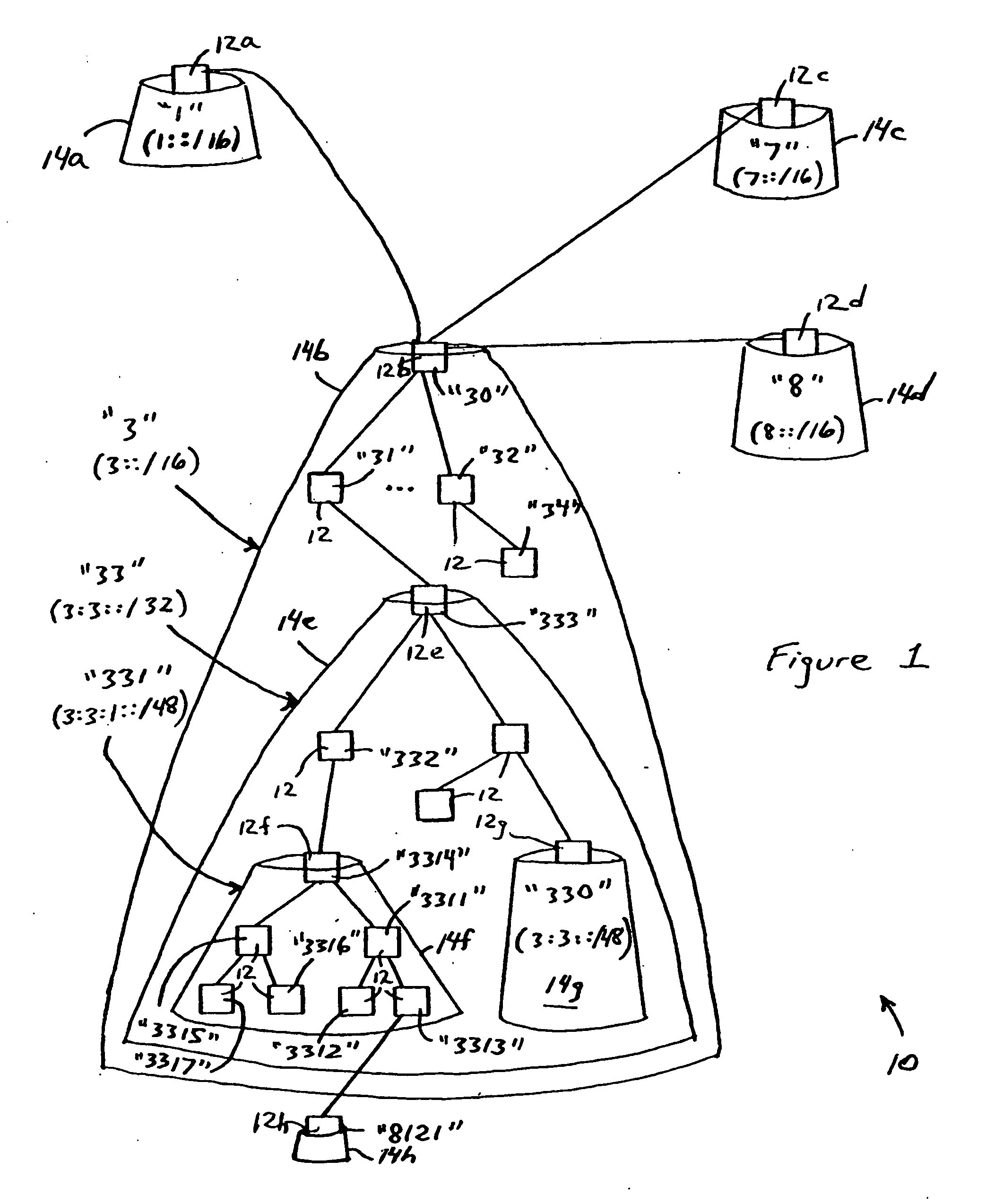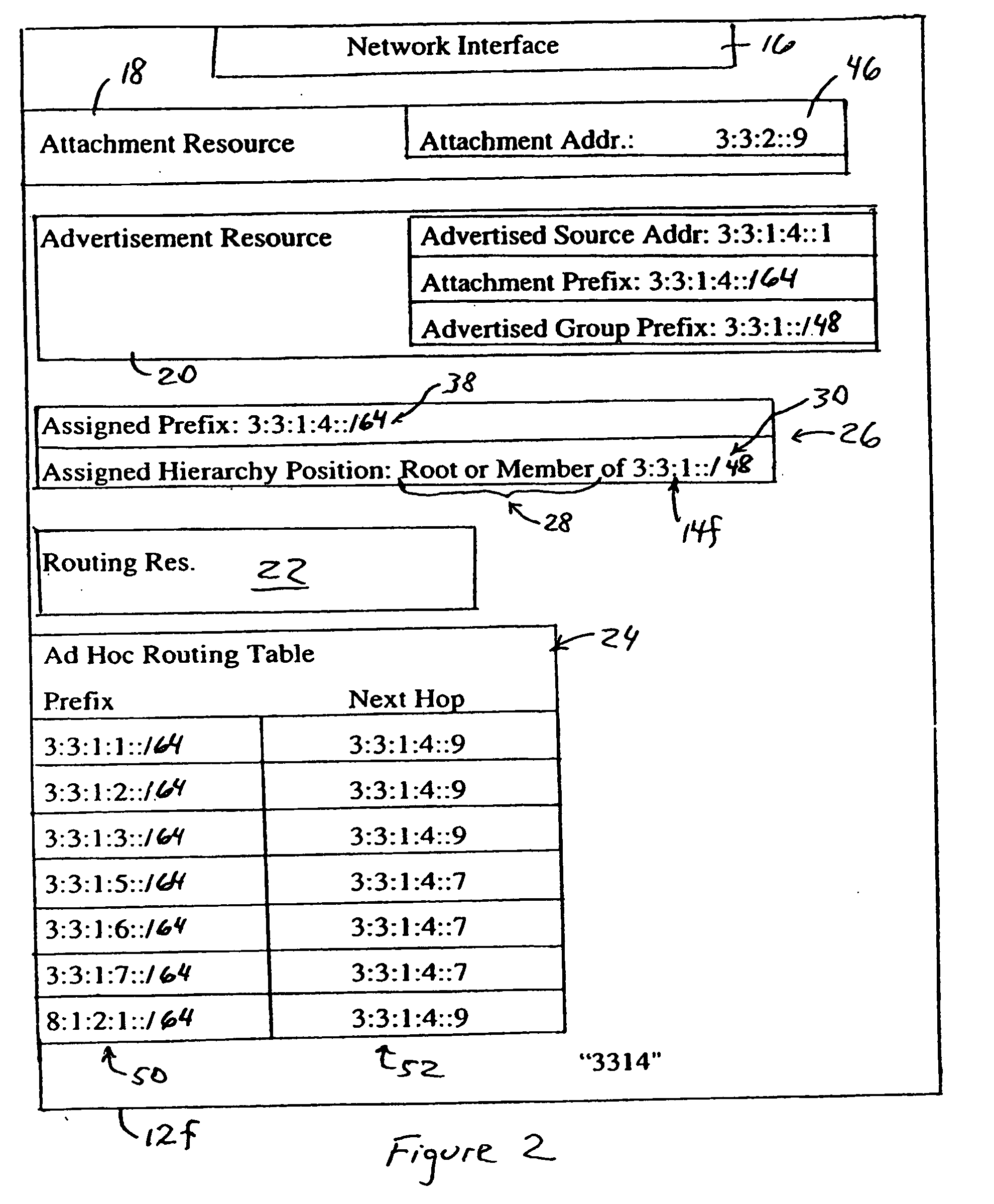Ad hoc network formation and mangement based on aggregation of ad hoc nodes according to an aggregation hierarchy
a network and node technology, applied in the field of ad hoc network formation and mangement based on ad hoc nodes according to an aggregation hierarchy, can solve the problems of affecting the convergence ability or communication efficiency of the network, the movement of a mobile router in the ad hoc network requires recalculation, and the wireless topology of the network may change rapidly and unpredictably.
- Summary
- Abstract
- Description
- Claims
- Application Information
AI Technical Summary
Benefits of technology
Problems solved by technology
Method used
Image
Examples
Embodiment Construction
[0038]FIG. 1 is a diagram illustrating a mobile ad hoc network 10 formed by mobile ad hoc routers 12 self-organizing into a tree-based topology having a single network clusterhead 12a, according to an embodiment of the present invention. Each mobile ad hoc router 12 is configured for advertising its presence in the ad hoc network 10 based on outputting router advertisement messages, described below. Any mobile ad hoc router 12 detecting the router advertisement messages can selectively attach to the advertising mobile ad hoc router, which now serves as an attachment router.
[0039]As described above, prior attachment techniques such as described in the above-incorporated U.S. Patent Publication No. US 2004 / 0032852 enabled individual mobile routers to choose an attachment router that belongs to a tree-based ad hoc network based on advertised attributes that describe the position of the advertising attachment router relative to the physical structure of the tree. For example, the U.S. P...
PUM
 Login to View More
Login to View More Abstract
Description
Claims
Application Information
 Login to View More
Login to View More - R&D
- Intellectual Property
- Life Sciences
- Materials
- Tech Scout
- Unparalleled Data Quality
- Higher Quality Content
- 60% Fewer Hallucinations
Browse by: Latest US Patents, China's latest patents, Technical Efficacy Thesaurus, Application Domain, Technology Topic, Popular Technical Reports.
© 2025 PatSnap. All rights reserved.Legal|Privacy policy|Modern Slavery Act Transparency Statement|Sitemap|About US| Contact US: help@patsnap.com



